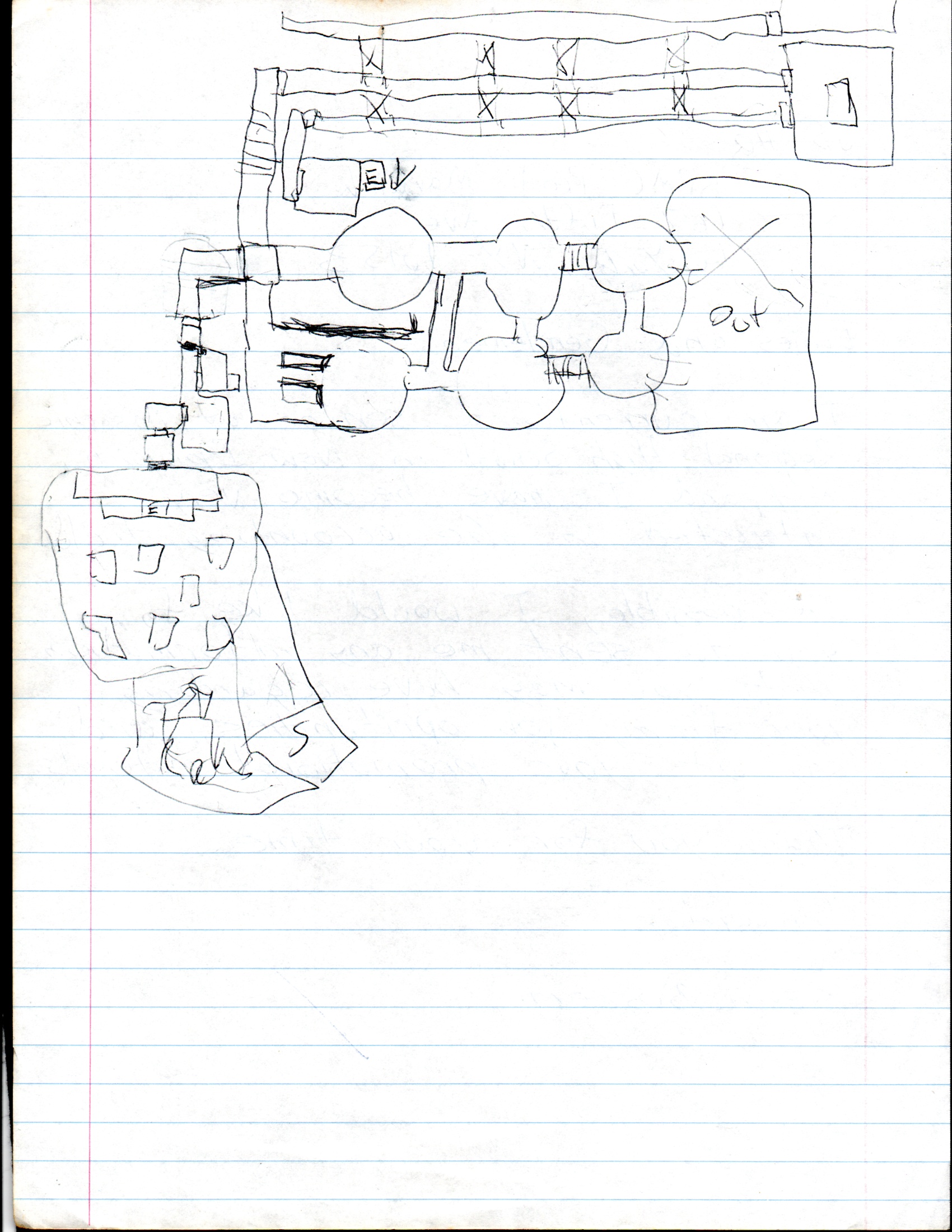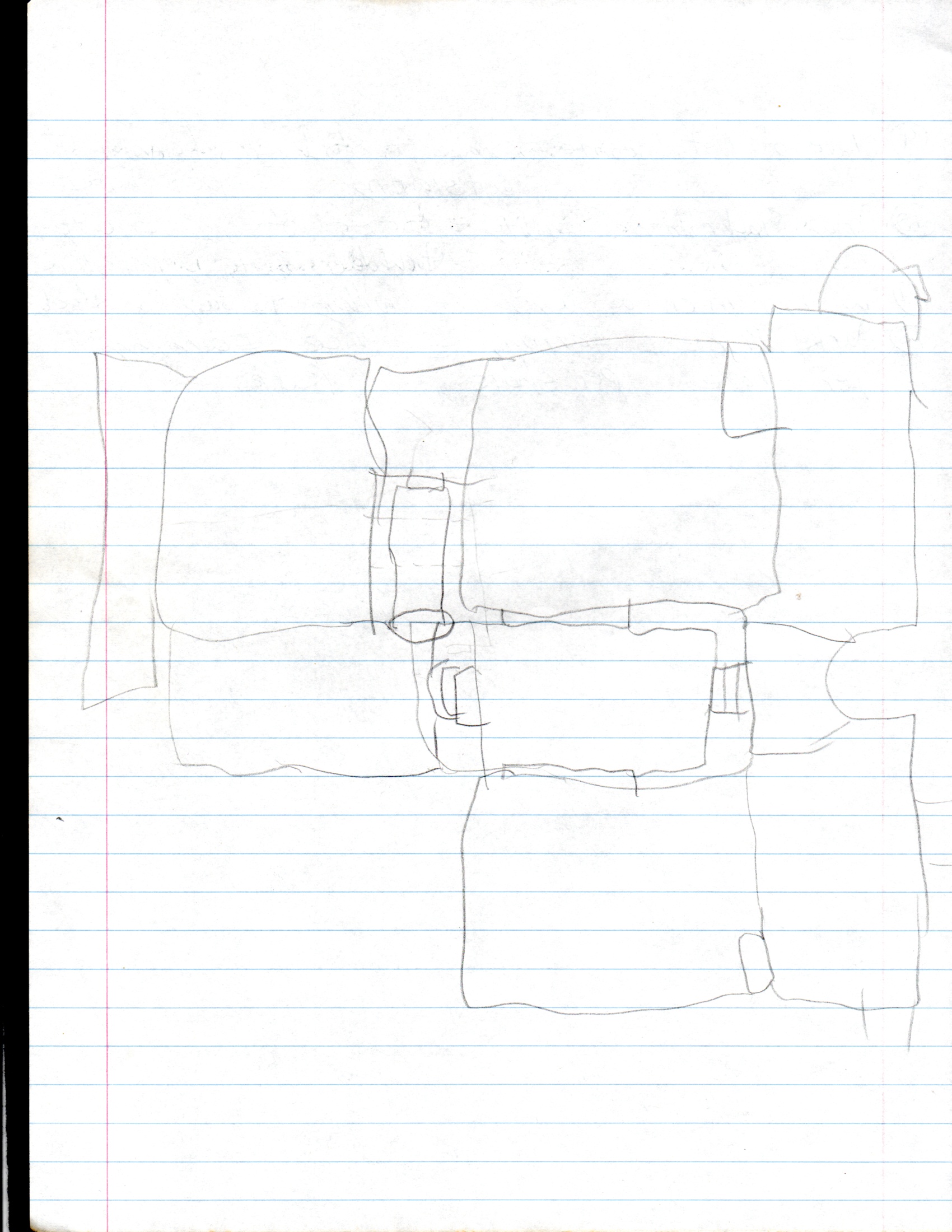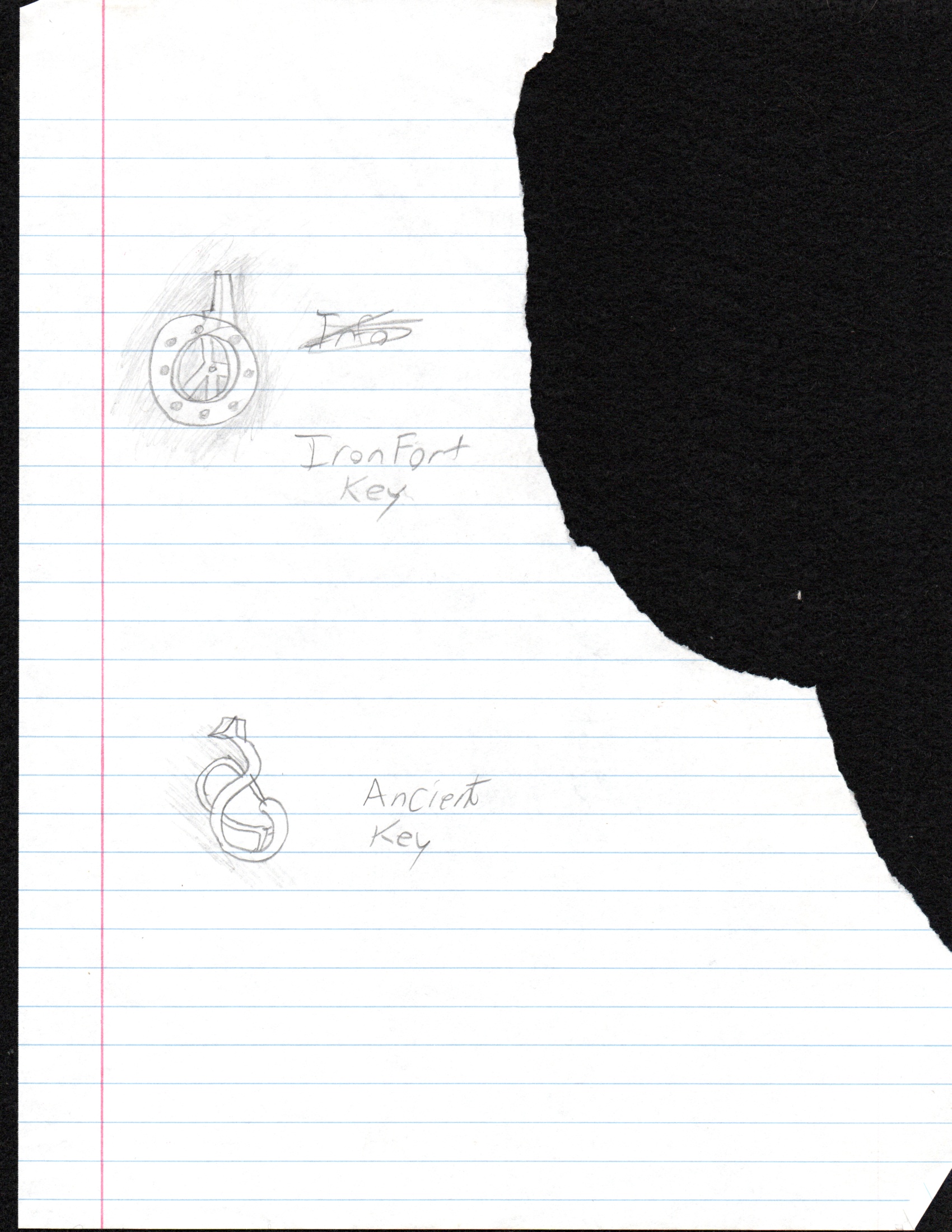![]() Interview of Kevin Buscemi
Interview of Kevin Buscemi![]()
Interview taken May 2023.

Background:
Kevin Buschemi is a well-known master Dark Forces mission maker. He is the author of Cloudspear, Discovery at Ironfort and the Beyond Glory series. The DF-21.net staff reached out to him about doing an interview after two decades of these releases. Below are Kevin's unedited thoughts and comments on the Force Engine release and playing the games again after all these years. as well as answers to community questions.

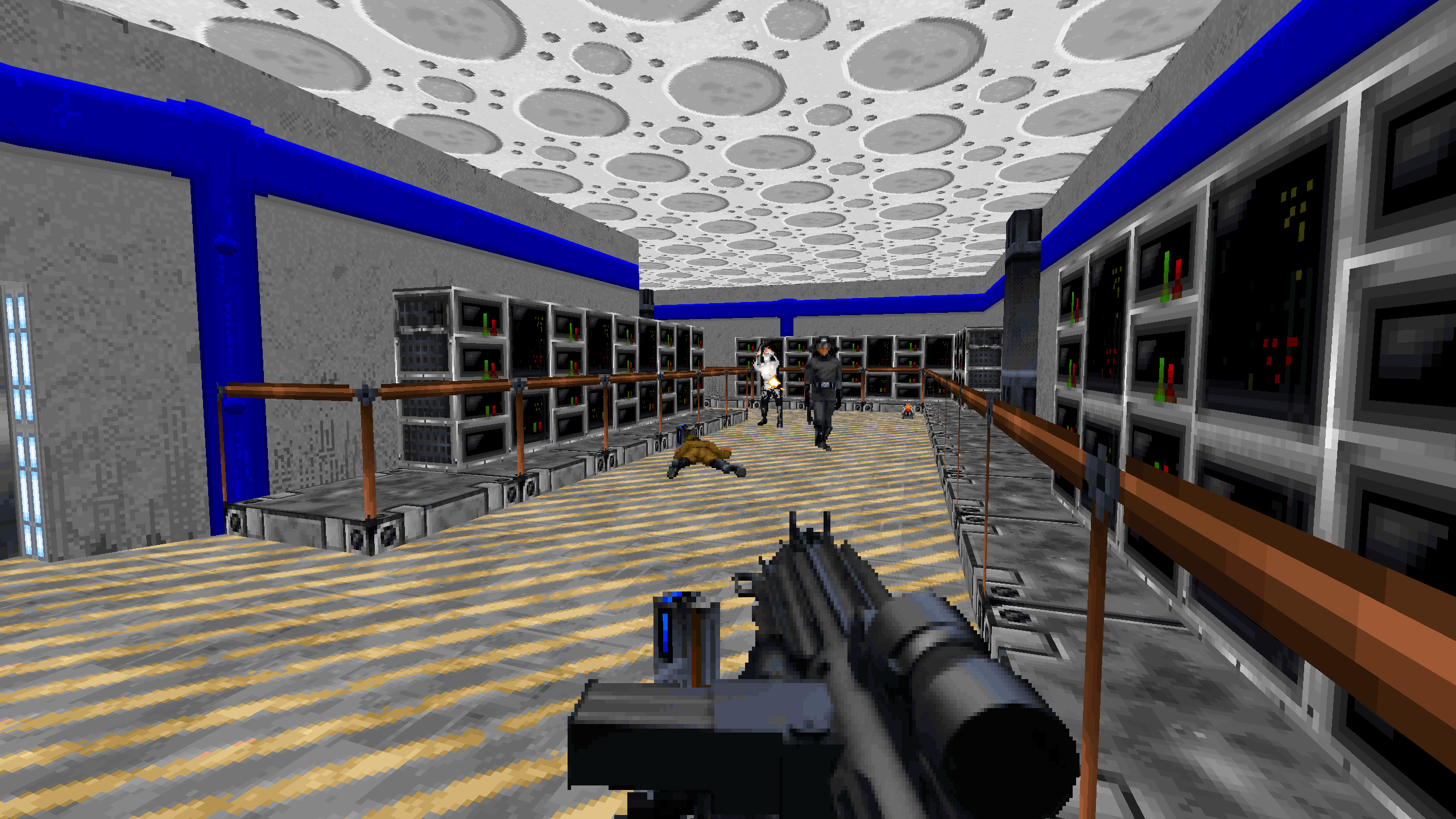
Kevin:
Playing through those 4 levels for the first time in well over a decade was interesting to say the least. I can't believe all the things I forgot about. Seeing everything in HD was pretty interesting, too. Most of the textures I made myself obviously never really matched the style of the original game artwork. But at 1080 resolution, the contrast seemed much more glaringly obvious than it did at 320x200. It's less noticeable in Ironfort and Cloudspear, where I used fewer custom textures and tried to make the ones I did use closer to the original style.
In Beyond Glory, I admit that I laughed at the flying bugs. When I first started making those, I think they were red and more wasp-like. I altered them only after noticing that they sort of looked like the enemies from Dark Forces 2. I probably should have left them as they were, but they're okay, I guess. The big worms (which I had completely forgotten about) were kind of pointless and goofy-looking, too, but I still like them.
All in all, I think I liked Cloudspear the best - possibly just because it seemed shorter than the others. I liked the beginning and end of Beyond Glory 2, but most of the middle probably could have been cut without much harm. Ironfort suffers from a lack of clarity at times, although that's less of a flaw now that people can save their games.
The only significant problem I ran into was that the custom briefing and objectives screen for Cloudspear didn't work with the Force Engine. It must have something to do the fact that Cloudspear has two .lfd files. The briefing did appear after I deleted cloudsp1.lfd - which removed the cutscene.
Okay. Enough rambling. On to rambling answers to the questions. Sorry if I ran on too much. I haven't thought about any of this in years, and it was fun to reminisce.
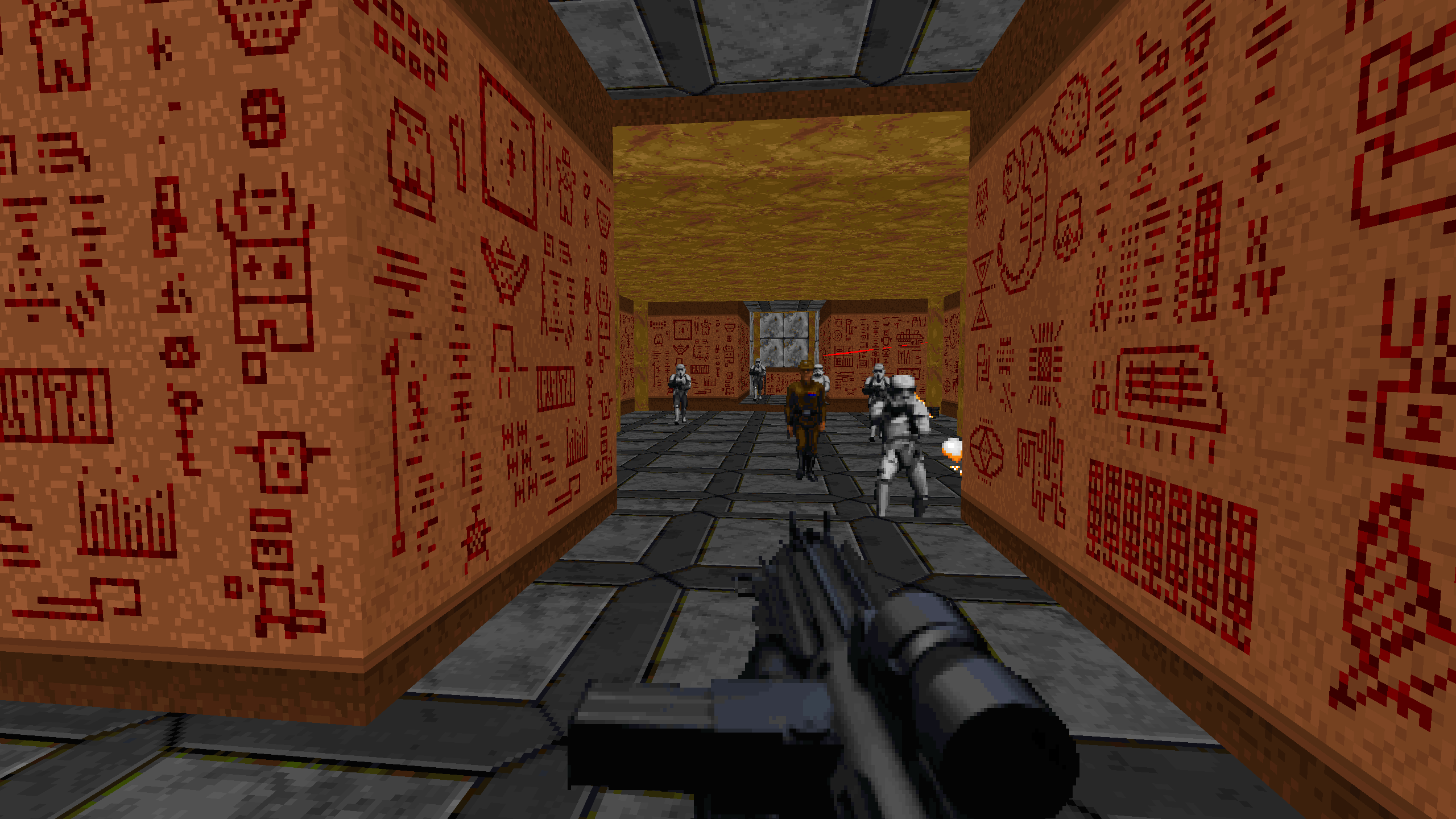
DF-21.net: What made you drop Wedit for WDFuse? Quality did increase and Beyond Glory 2 is still one of our favorite levels.
Kevin: I started using Wedit because it was the first editor that I found. There was also some long forgotten aspect to it that I preferred to WDFuse. Anyway, once I learned that WDFuse had a tool that aligned wall textures automatically, I had to switch. To make a long story short, the lack of that feature in Wedit resulted in the interior areas of Beyond Glory being kind of blocky (something I didn't really think about until after I was finished.)
I don't think I intended to publicly release Beyond Glory for most of the time I was working on it. There's a lot of inside, funny-only-to-me jokes in the hieroglyphics. Look for an indifferently drawn skunk (that looks like a squirrel) using a slide projector.
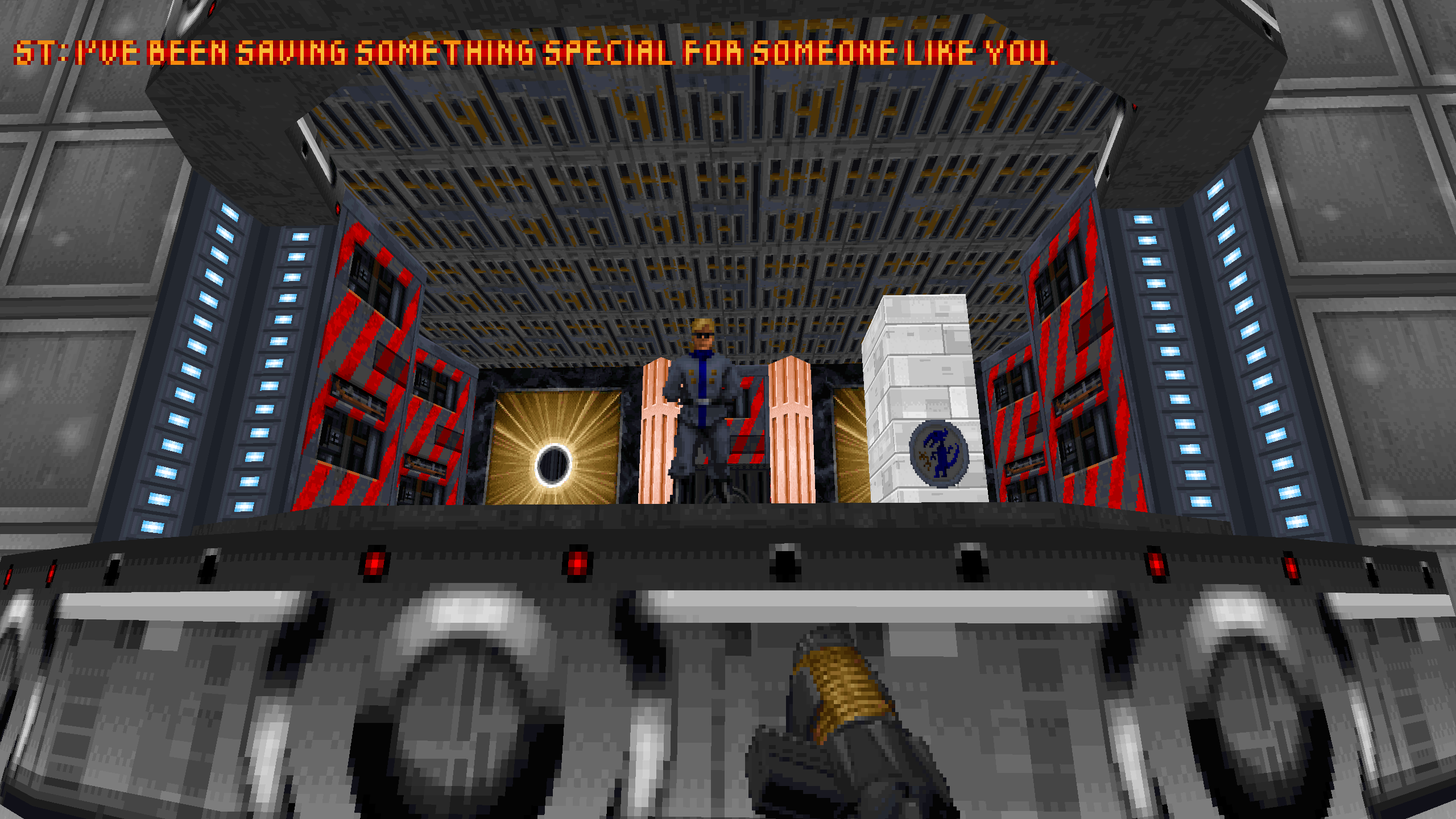
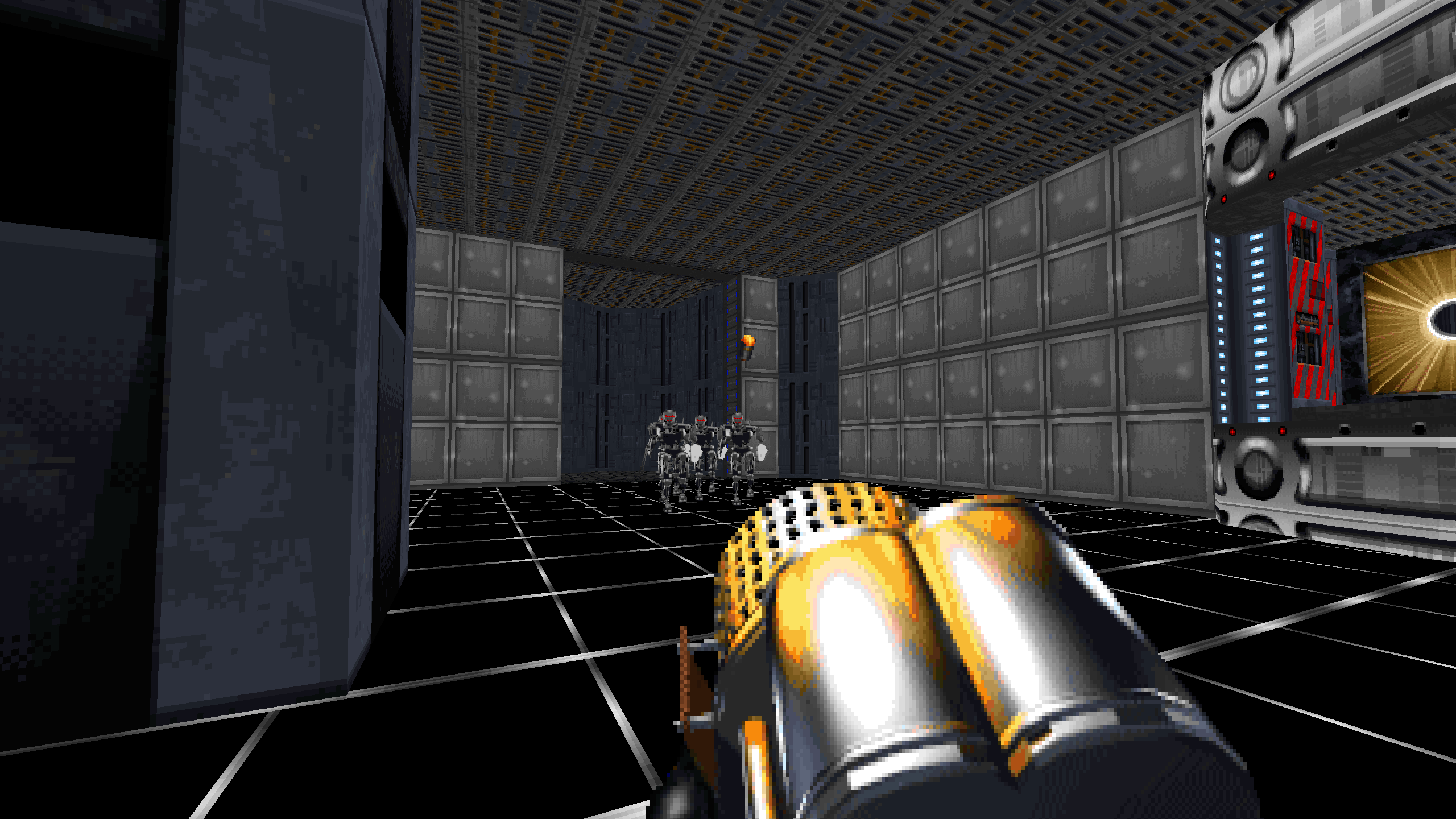
DF-21.net: Why all the Phase 1s in Beyond Glory?
I thought those things were kind of scary at the time, and I liked the noise they made. The idea of throwing a bunch of them at the player all at once must have been too tempting to resist. Just chalk it up to the youthful tendency to overdo a good thing.
When playing the level for the first time in many years, what shocked (and killed) me was the guy with the big concussion gun who came through the door when it opened. Now THAT was just mean-spirited...
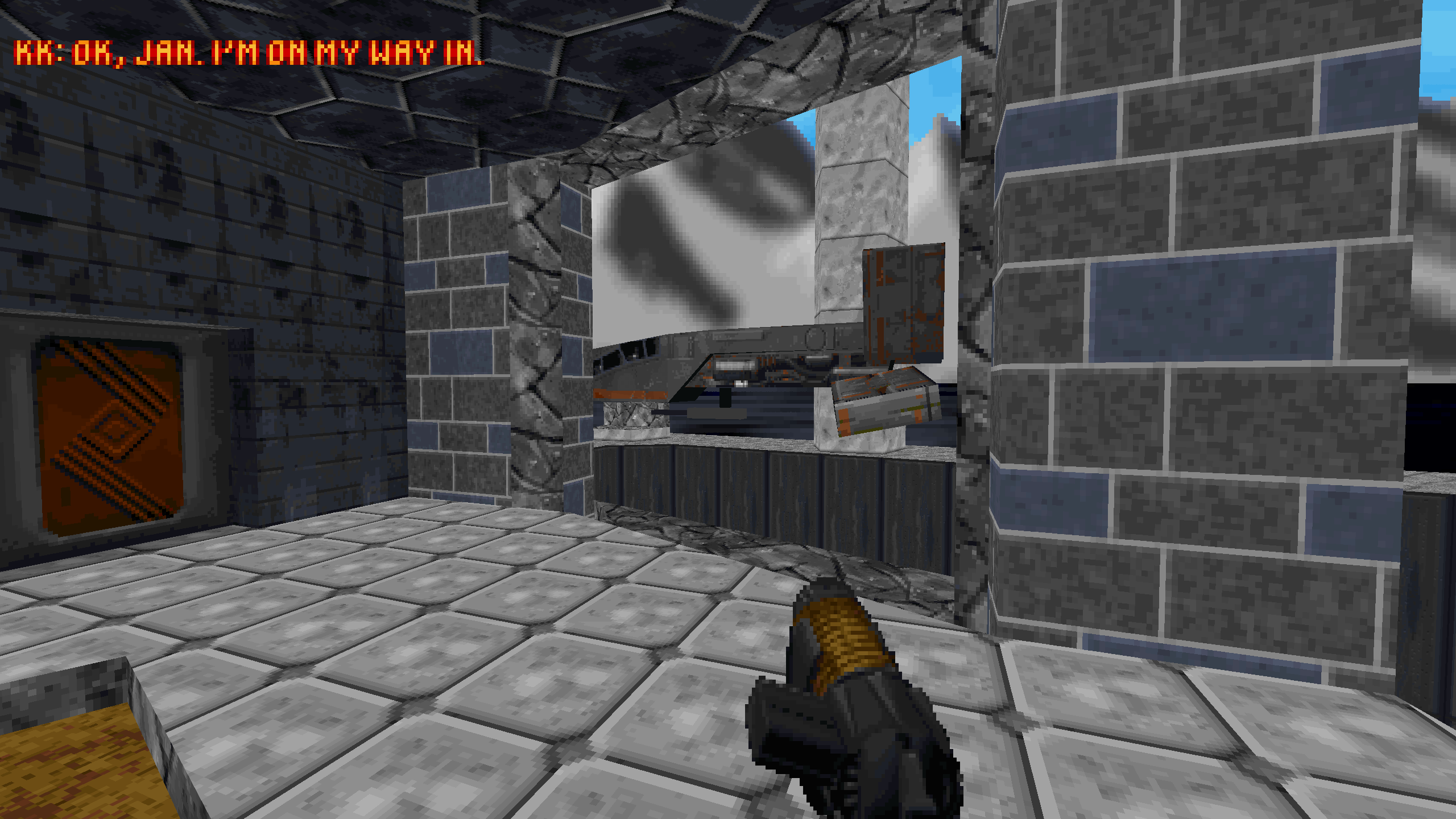
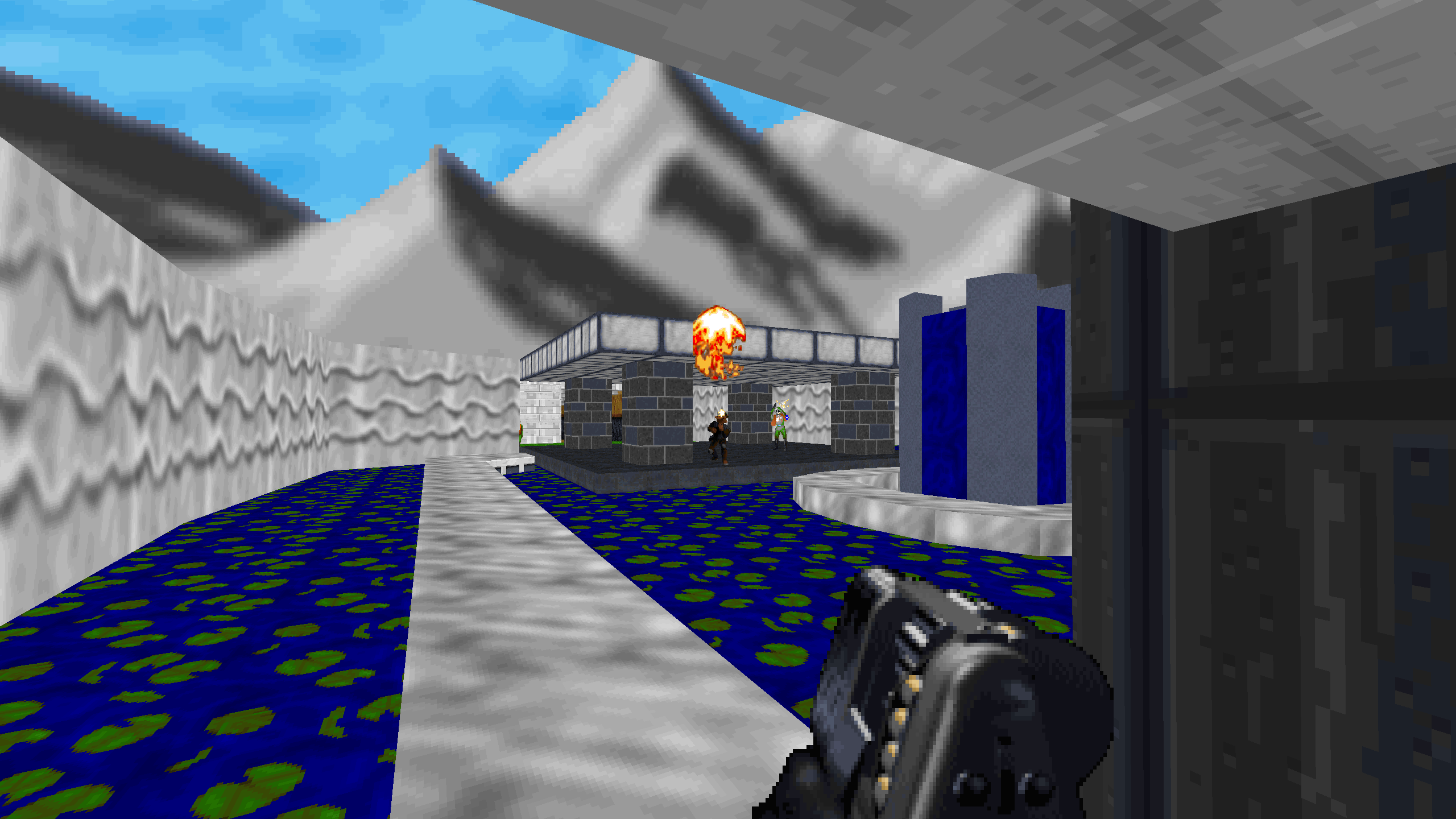
DF-21.net: Who was Senj Thirtrae real life model used for the briefings? Also who voiced him?
Kevin: Back in the olden days, when you needed a picture for something you had to cut one out of a magazine or newspaper. So when I needed a picture of a mad scientist type, I just scanned one from what I believe was some sort of military and police supply catalog. I got the name for the character from a strange green pencil that said it was "made from $7.33 in recycled U.S. currency." The voice acting, which was completely and utterly serviceable and adequate for its intended (not-for-profit) purpose, was done by me. You get what you pay for...
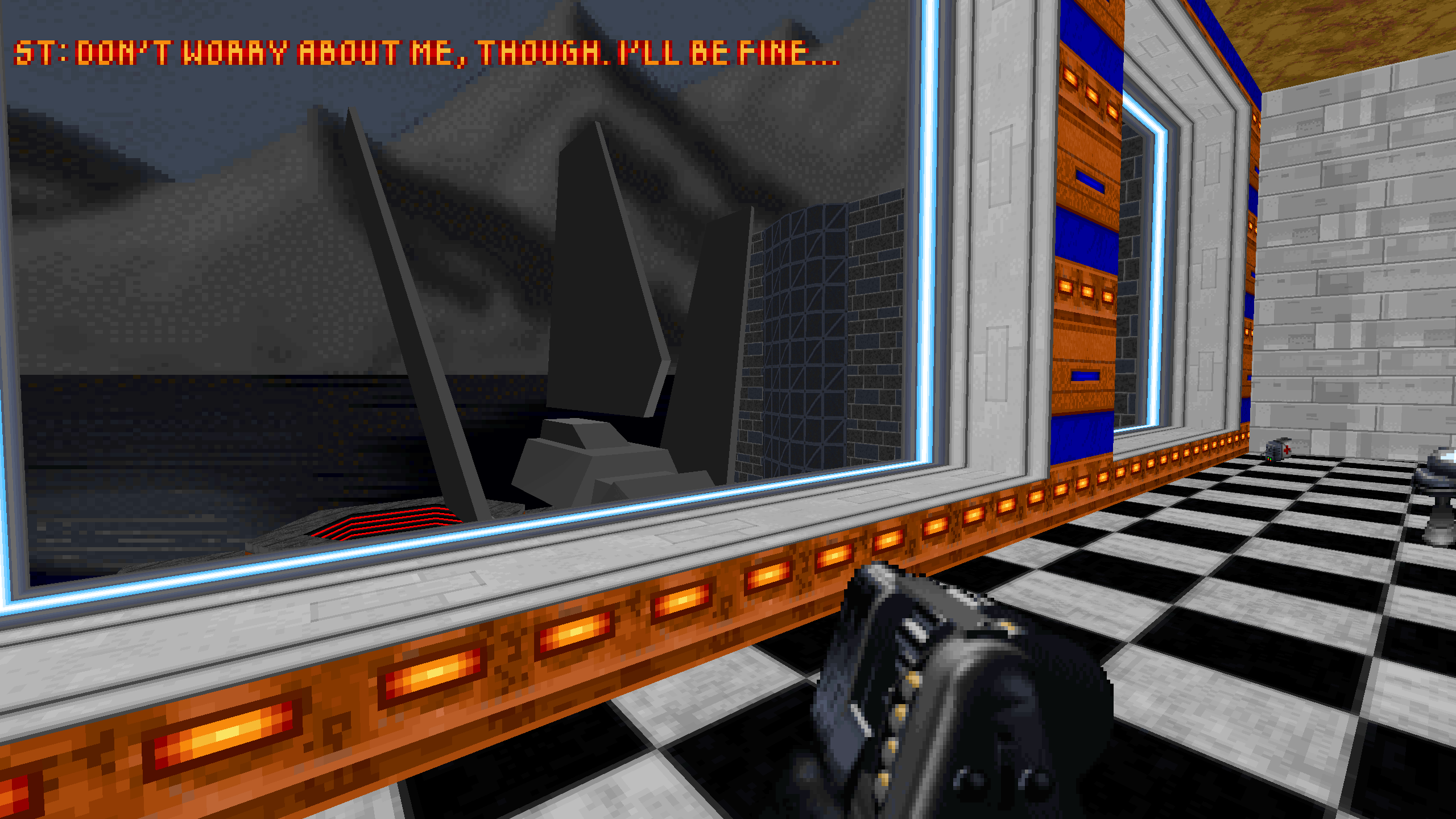
DF-21.net: How was someone supposed to figure out the forcefield code in Ironfort without a guide?
Kevin: I remember having a lot of doubts about that puzzle, even when I was designing it. I wasn't so much worried that it was too hard. I was worried that it was out of place in a Dark Forces mission and that it appeared far too late in such a long level. It was inspired by the sometimes vague puzzles of the Myst games and their imitators. That type of game, and the sort of observation and logic required to solve their puzzles, was probably more popular in those days than it is now.
In my defense, I remember trying to get all of the testers to tell me that it was too hard. They must have been very clever people, since not a single one of them would do it. So, despite my lingering doubts, I left things as they were. After months and months of working on that ridiculously long level, I REALLY just wanted to be done with it.
Looking at it now, 20 or so years later, the puzzle has three parts. First, you have to find the code - which is much easier to miss than it ought to be. Second, you have to recognize the code for what it is. There's really no good reason that the alien voice that says the numbers couldn't also say some variation of: "Hey dummy! Here's the code you need to enter to win. Hold still while I smash you over the head with it!"
The third part is obviously translating the numbers. That really should be the only tricky part. Most people would probably be able to do it if there was little question about what they actually had to do. There's only eight symbols (I was batty enough to plan on 12 at one time) and numbers 1, 2, and 3 are on many switches in the area, including the main elevator. Another hint or two wouldn't have been a bad idea, either.
Before releasing Ironfort, I considered adding the code directly to the already-made briefing and objectives list (which probably would have been the best way to handle it.) But I just couldn't make myself add on the extra work at that point.
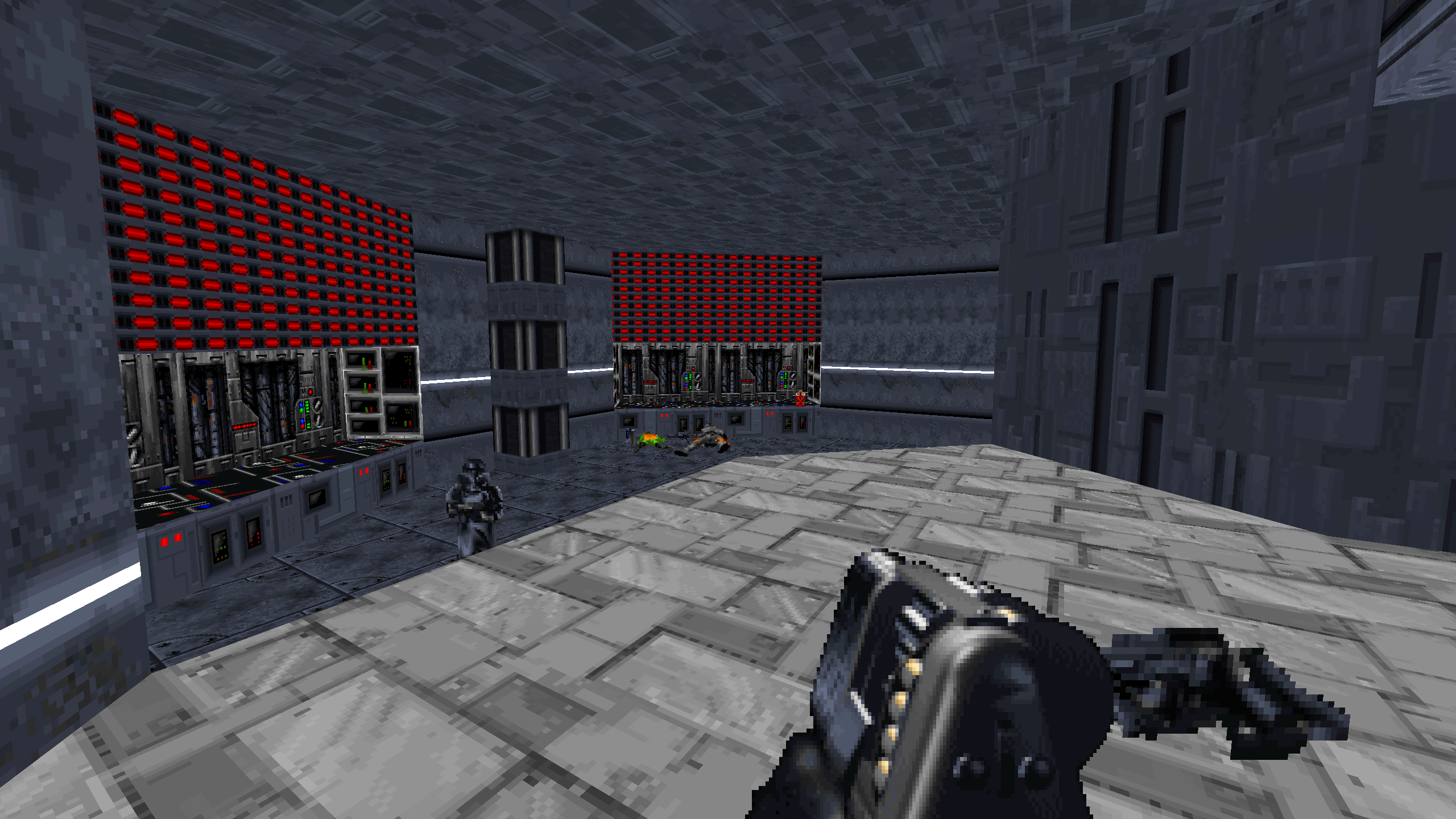
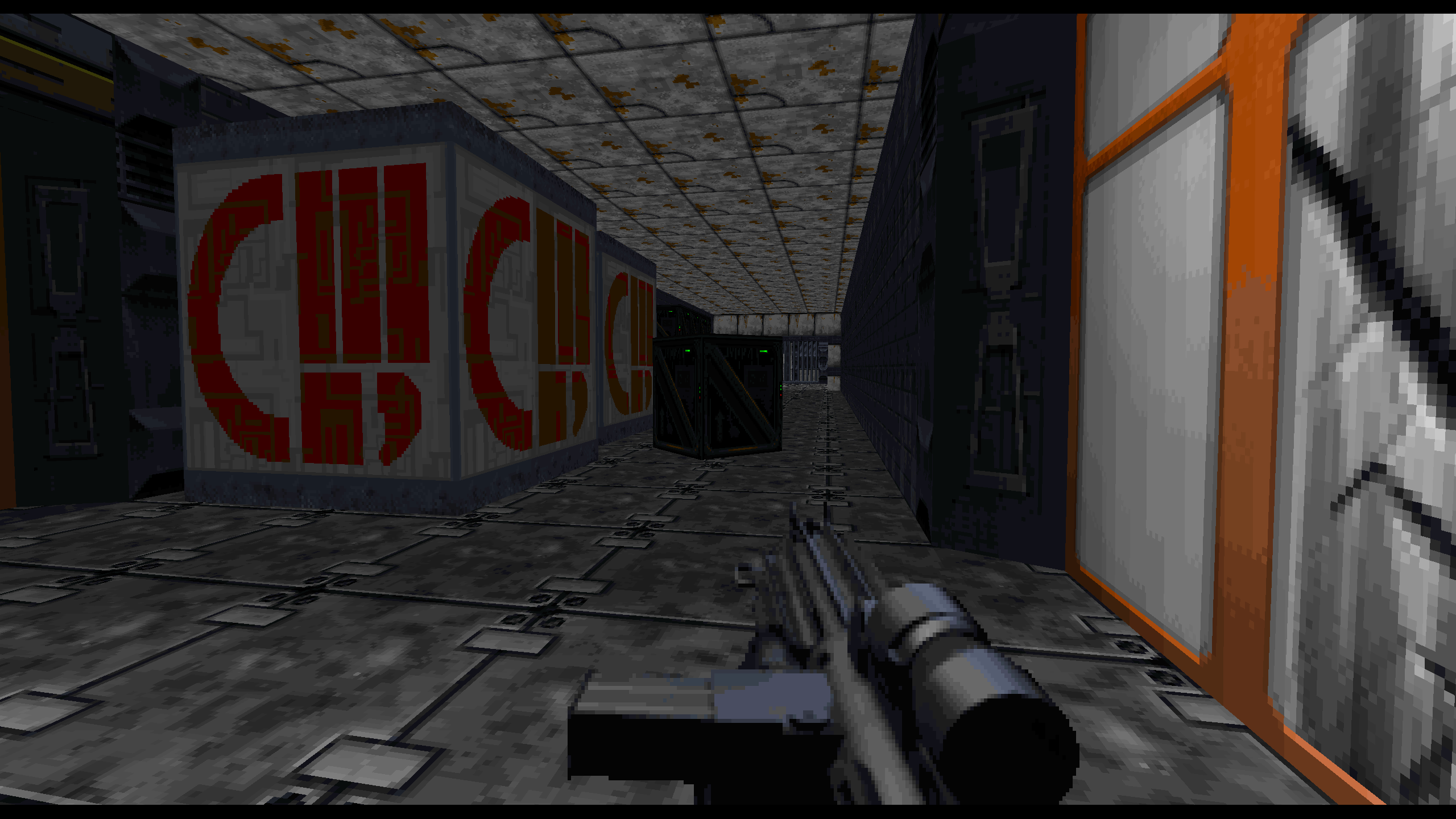
DF-21.net: How did you approach designing the separate exploration, puzzle and combat parts of Cloudspear?
Kevin: Since I didn't have a clear idea of what I wanted to do with that level for a long time, a number of areas were built in modular segments that I shuffled around as I went. The flooded city section was made very early on, and the crate/crane puzzle was lost and uncertain of its place in the world until it found a home near the start.
The enemies were added later on. I had gotten used to the lonely, lifeless feeling of the whole thing, so it seemed a shame to have to add any enemies at all. I tried to preserve that sense of isolation by keeping a few areas pirate-free. I was tempted to leave the opening area mostly empty, too, but I must have thought it would have made the level too easy.
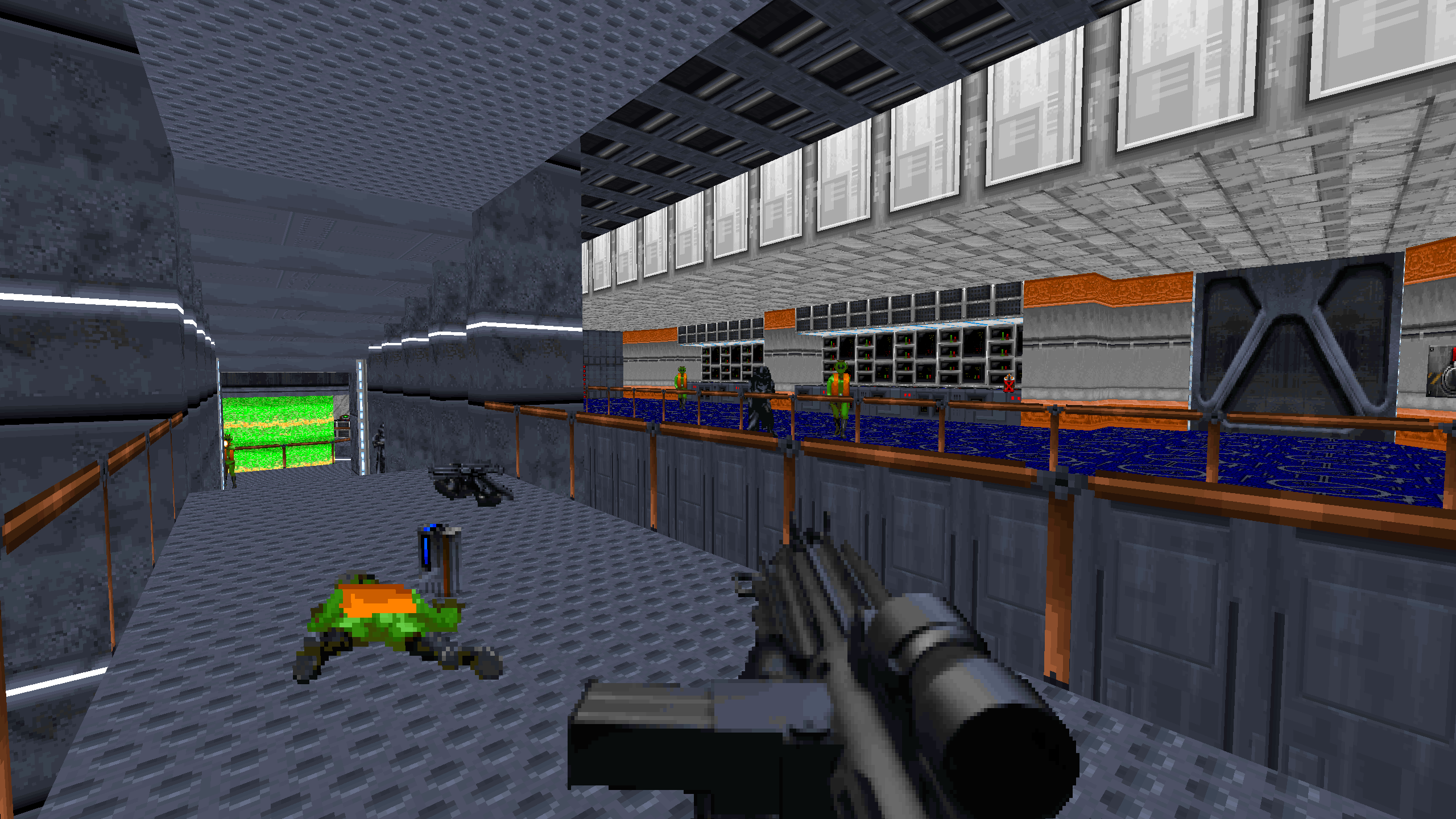
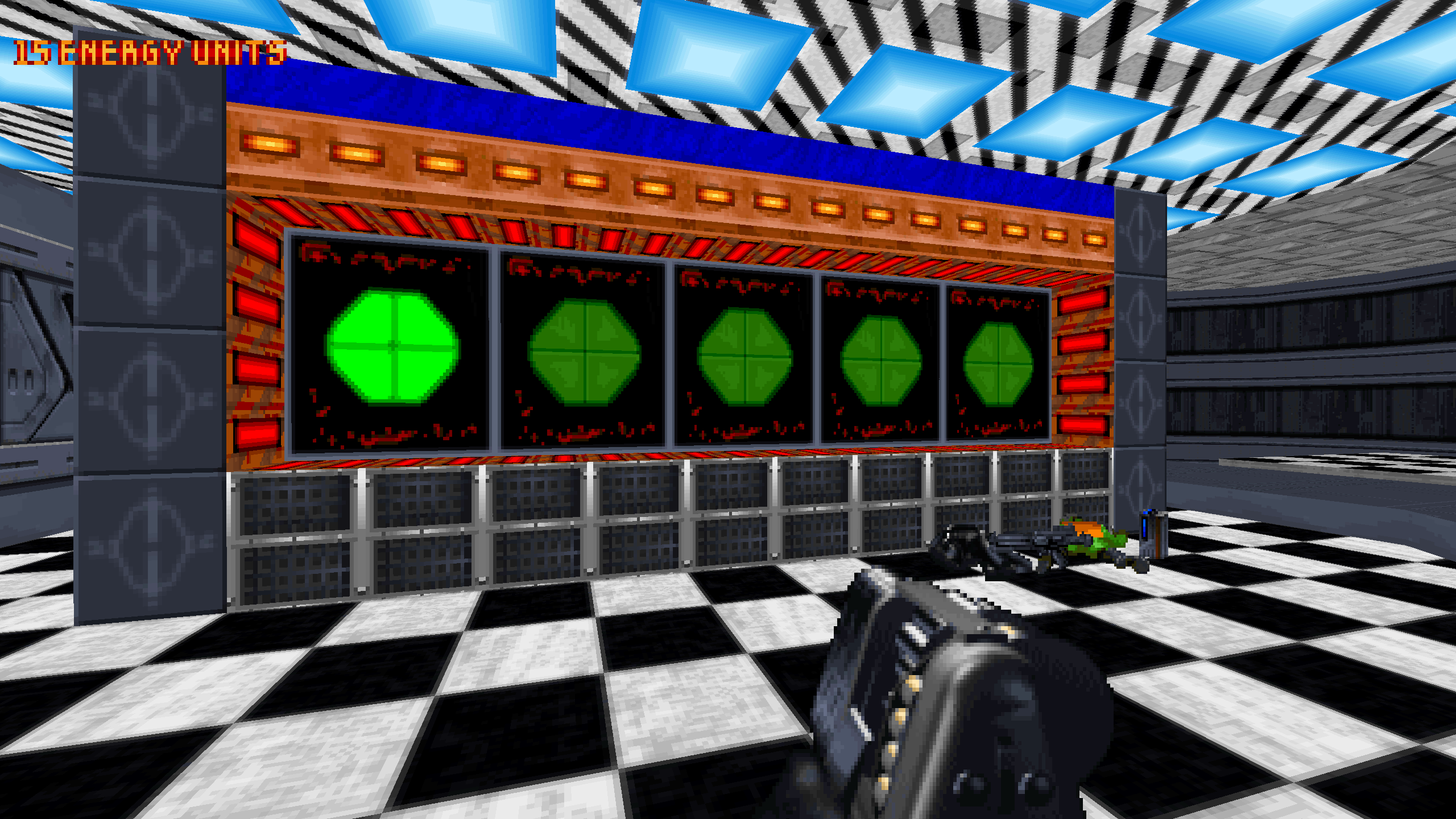
DF-21.net: What is your approach to puzzle design in Dark Forces? Where do you get your inspiration from?
Kevin: . With the exception of the crate puzzle in Cloudspear, I always started with the decision to complicate a simple task (like picking up a key or hitting a switch) by inserting a puzzle. Then I would figure out what that puzzle would be.
I played a lot of so-called adventure games in my youth (Shadowgate, Space Quest 2, and Conquests of Camelot were early favorites). But the already-mentioned Myst and it's sequels and clones were probably the biggest influence on me when I was making Dark Forces levels.
The problem was that Dark Forces wasn't an puzzle/adventure game. It was more or less an action game - and one that you couldn't save and return to later if you got stuck on some fool's convoluted idea of a puzzle. So I always had to force myself to make things much simpler than I was naturally inclined to.
Except for the infamous code puzzle in Ironfort, I was generally satisfied with the end result. Before releasing Beyond Glory 2, I worried that the generator/pool puzzle had drifted too far into adventure game territory. Ultimately, I felt that it was straightforward enough to not be a problem.
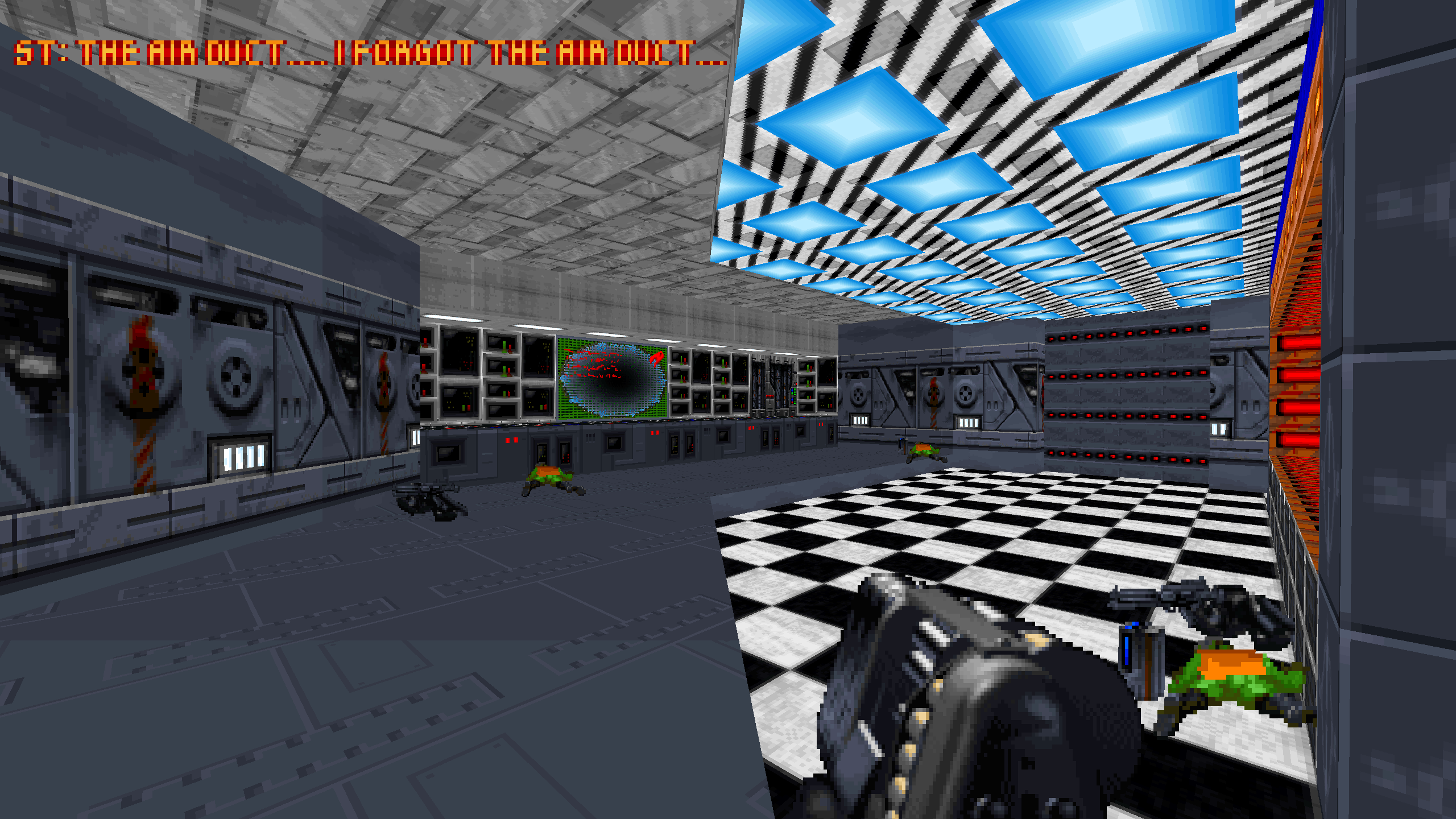
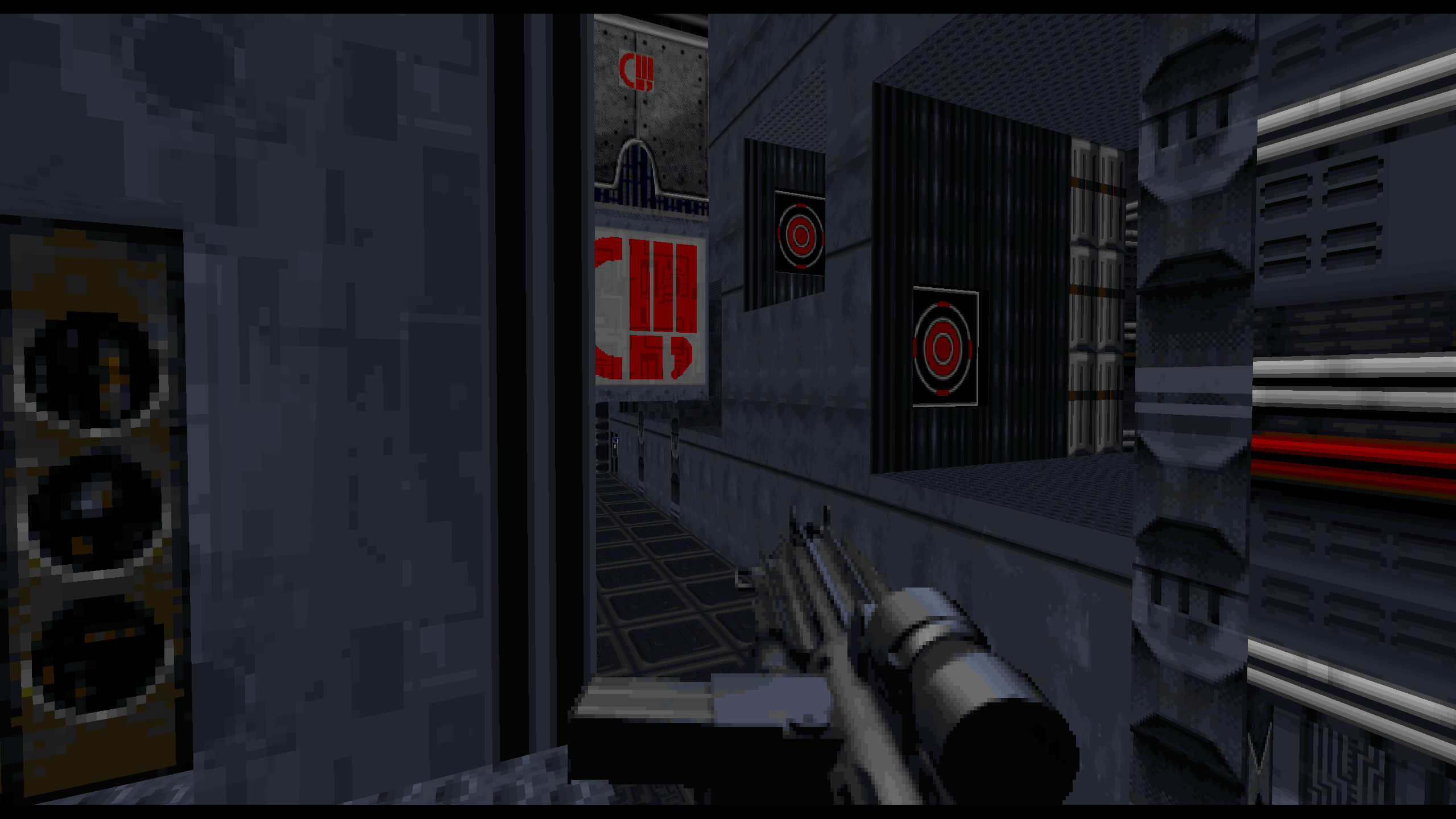
DF-21.net Were there substantial changes to the project from when it was in development for the DF2000 level project?
Kevin: I don't think too much really changed after I pulled out of the DF2000 project. (I had too many things going on at once and needed to focus on finishing what became Cloudspear 1. In hindsight, I think I knew deep down that it would be my last level. I unwisely stuck with the idea of a series only because I had already started what would have been part 2.) Anyway, I believe the beginning and the end areas of the level were built afterward, as well as the originally unplanned valve puzzle. The basic story was more or less the same.
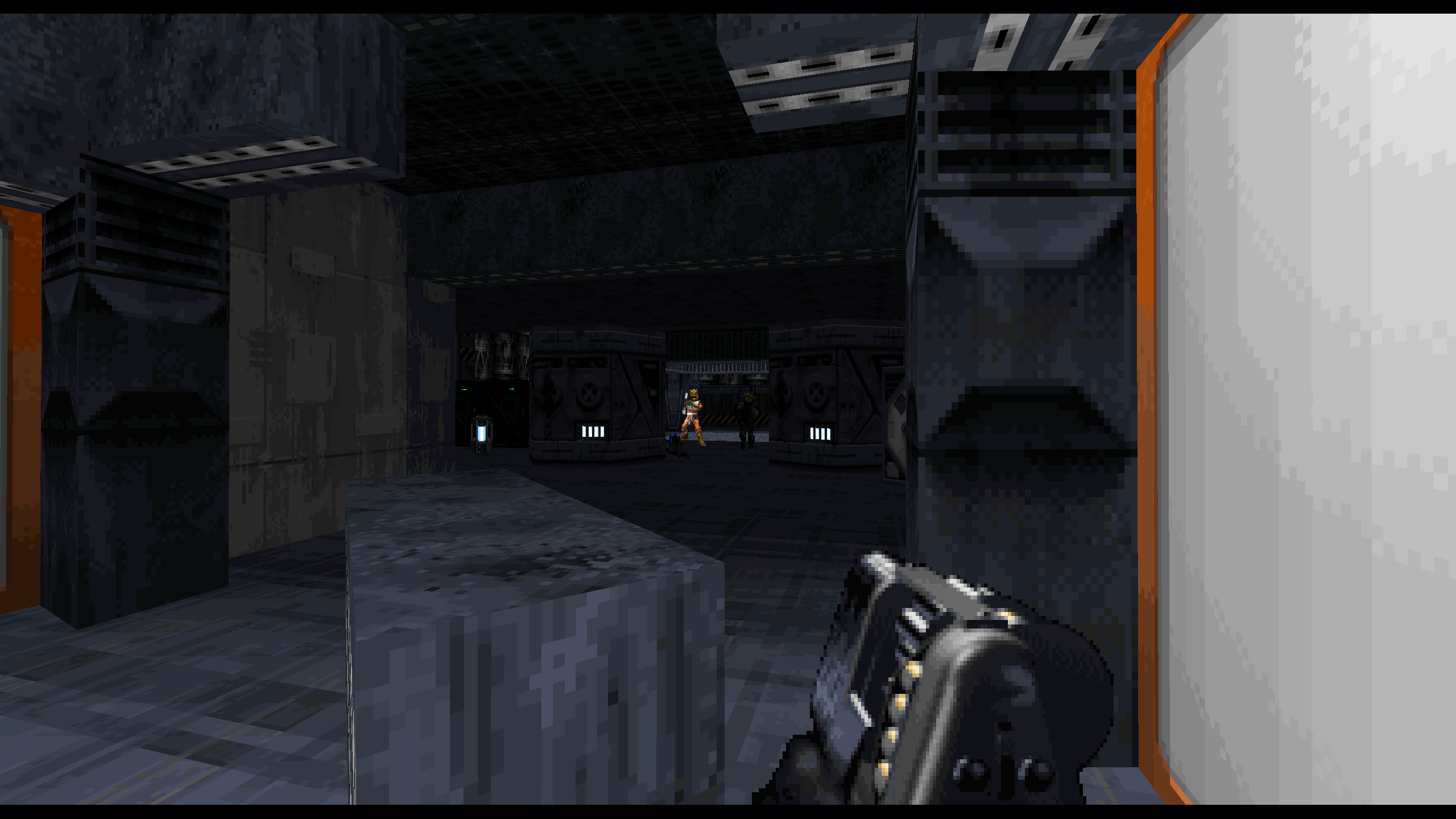
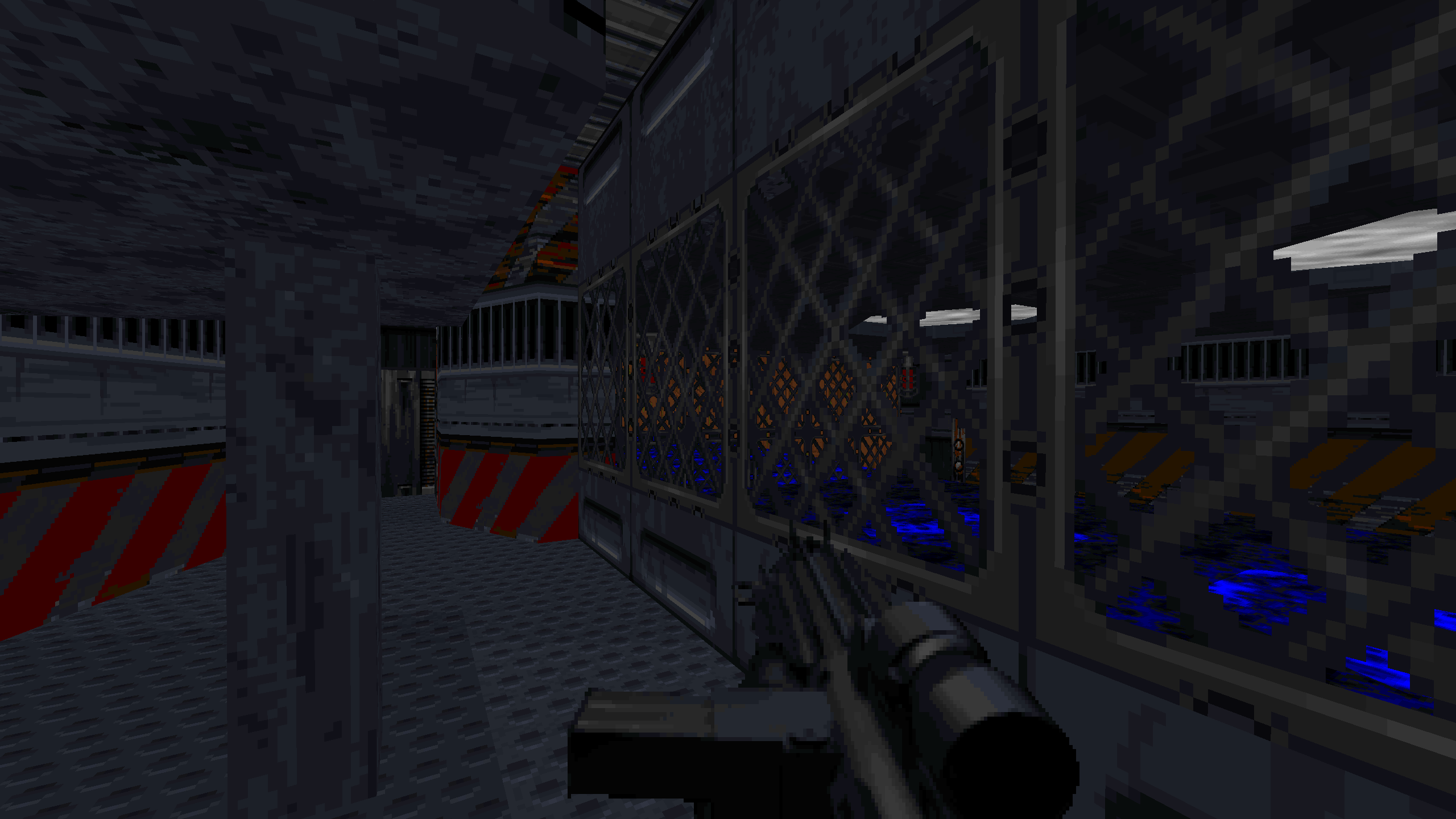
DF-21.net: Were there any things that you wanted to pull off with Dark Forces, but never accomplished in your levels? (I know that your Crossroads TC was a bit of a dead end due to engine limitations)
8. In the end, the only real objective I ever had when working with Dark Forces was to have a good time. In that, I was greatly successful. When the things I didn't like about it started to outweigh the things that I did, I stopped. Really, if you're not making free custom video game levels primarily for the fun of it, you're in the wrong business.
That being said, there are regrets and loose ends, of course...
In Beyond Glory 2, I've long felt that somebody should have cracked a joke after poor Senj Thirtrae's overly dramatic last words. I left it as it was to leave an opening for a potential Beyond Glory 3 - where you would have dramatically battled the madman's ghost in the dramatic wreckage of his dramatic creation. That never happened, of course, so letting the weirdo have more or less the last word now just kind of annoys me.
In Discovery at Ironfort, as mentioned before, the code puzzle should have been demystified somewhat. I also always regretted not splitting the level in two (although I feel a lot better about that now that there are ways for players to save their games.)
I knew even before I released Cloudspear that I should have rewritten the briefing to make the level into a standalone mission with an opening for a possible, but not required, sequel. Somebody expressed an interest in completing the series, though, and that was all the excuse I needed to abandon the idea.
The new story wouldn't have had to be anything too fancy. Something like: Rebels get wind of lost, well-hidden facility called Cloudspear. Rebels have professional interest in well-hidden facilities. Rebel agent sees opportunity to get more information and goes to get it - even though he'll likely never know whether anything came of his efforts.
As for the first Beyond Glory, I still like it more than most people probably do, but it wasn't a truly serious effort in retrospect. So, except for that creep with the concussion rifle, I'm content with it as is.
The Crossroads TC was going to be a collection of short levels with 1 to 4 puzzles in each and a fairly simple story. I only canceled it because I wanted to focus on whatever overly ambitious project I was also working on at the time. If I had stuck with it, I think it would have worked.
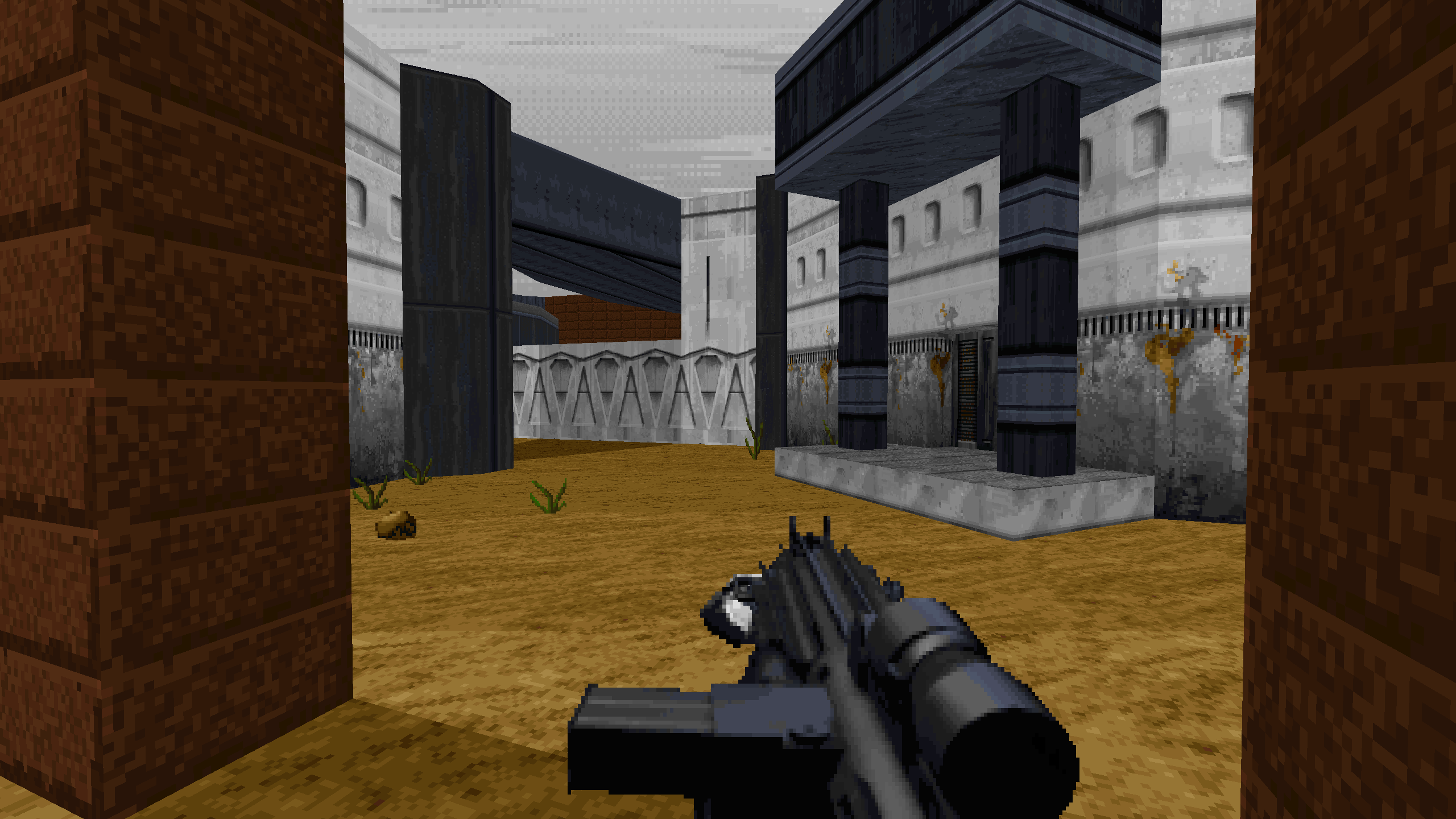

DF-21.net: How do you feel about the DF-21 (and it's predecessor DF-99) community still kicking the can in 2023 almost a quarter of a century later?
Kevin: Honestly, I can't say I'm really shocked. It was a good game in 1998, and it's even better now with all the modernization efforts. Why shouldn't there still be interest in it? Seems completely reasonable to me.
In the early days, I remember some people thinking we were a bunch of oddballs for taking such interest in a low resolution old MS-DOS game. (There's nothing inherently wrong with being an oddball, but there's nothing inherently praiseworthy about it either. But I digress...) The great shiny new thing that all the cool kids were into in those early days was Dark Forces 2: Jedi Knight, which had the insulting (to me) official name of "Jedi Knight: Dark Forces 2." It was a good game, I thought, but not nearly as good as the original.
A year ago, on a whim, I bought digital copies of both games. It warmed my heart to notice that Dark Forces had more positive reviews than Jedi Knight. There could be more to the story, of course, but I like to think that the oddballs won in the end.

DF-21.net: Your texture and architecture work is phenomenal. Cloudspear looks more like a Duke Nukem mission with all the details. How do you prepare for a scene?
Kevin: Sometimes I just winged an area completely from scratch. For the more complex sections, I usually sketched out a rough map on paper first. Some of those maps were fairly detailed, but most were pretty vague.
When I started building a room, hallway, or outdoor area, I'd start with a basic mental image of what I wanted it to look like - sometimes based on places I had seen in real life or in other games. I got in the habit of looking for architectural details that I liked and could use. The limitations of Dark Forces, which was an outdated game even at the time, could be frustrating, but I tried to focus on what was possible. I always felt that accepting those limitations, and not fighting against them too often, was the key to success (for me at least.)
Once I had a basic mental image of what I wanted, I would build a little, then test. Tinker with it a little, then test. Add some spontaneous new detail that popped into my head, then test. It was ridiculous how often I tested... Sometimes the scene came out almost exactly as I had envisioned it. Other times, it wasn't even close. I was never really afraid to deviate from the plan. I always figured that if a discarded idea was good enough, I would find a place for it somewhere else.
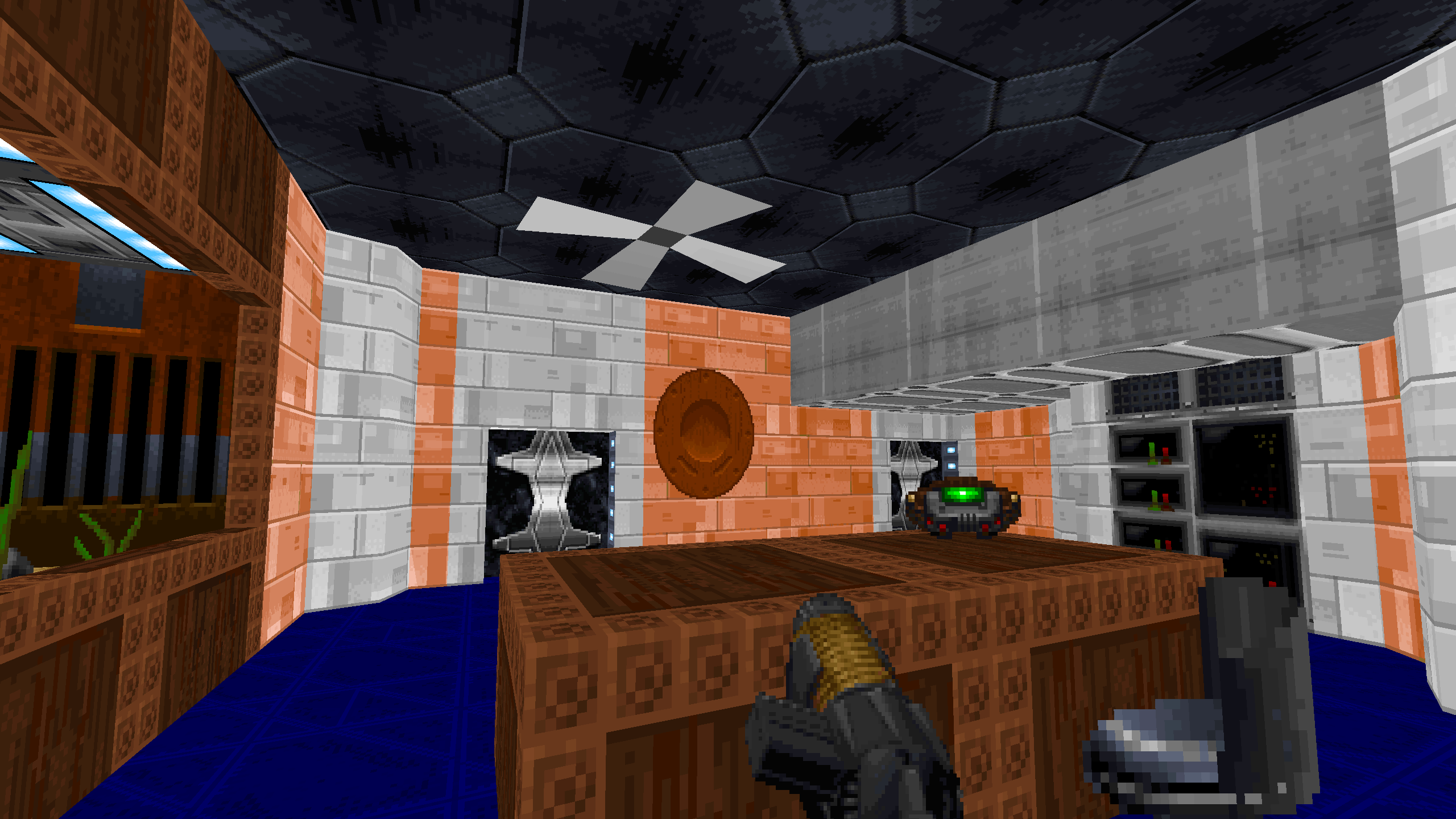
DF-21.net: There is something of a Bioware feeling of exploring a destroyed sci-fi city in Cloudspear - how did you design the atmosphere of that mission?
Kevin: I dreamt it.
I had a strange dream about a place with white walls and an overcast sky. There was a door that led to a long, straight, narrow stairway. At the bottom, I turned into a hallway with dingy water on the floor and bland, light-colored walls like something from an office building. Around a corner, there was a large, dark room with 4 square columns and a square of light in the center. I must have thought that this dream would make a good Dark Forces level, because (I kid you not) one of those lizard guys in the orange outfits walked into the square of light from the right side.
Everything just grew up from there. The abandoned, flooded hallway evolved into an abandoned, flooded city. I've always found abandoned places fascinating, and there was a section of ruined city with a lot of probe droids in Jedi Knight that frequently came to mind when I was developing Cloudspear.
My memory is very cloudy, but I think I built everything from the dream first and later moved the various elements to new places that made more sense. The starting open air room became the small courtyard with a gray beam over it just before you enter the flooded city section. The dark room with the square of light was put near the end of the level. The flooded hall became the entrance to the archive area (with a long stairway leading down to it.)
Not being an excessively sentimental type, I made changes to all of the segments for various reasons - such as breaking the long, straight stairway into two flights for architectural purposes. But when placing the enemies, I had enough healthy sentimentality to make absolutely certain that one of those lizard guys was waiting for you on the right side of the dark room.
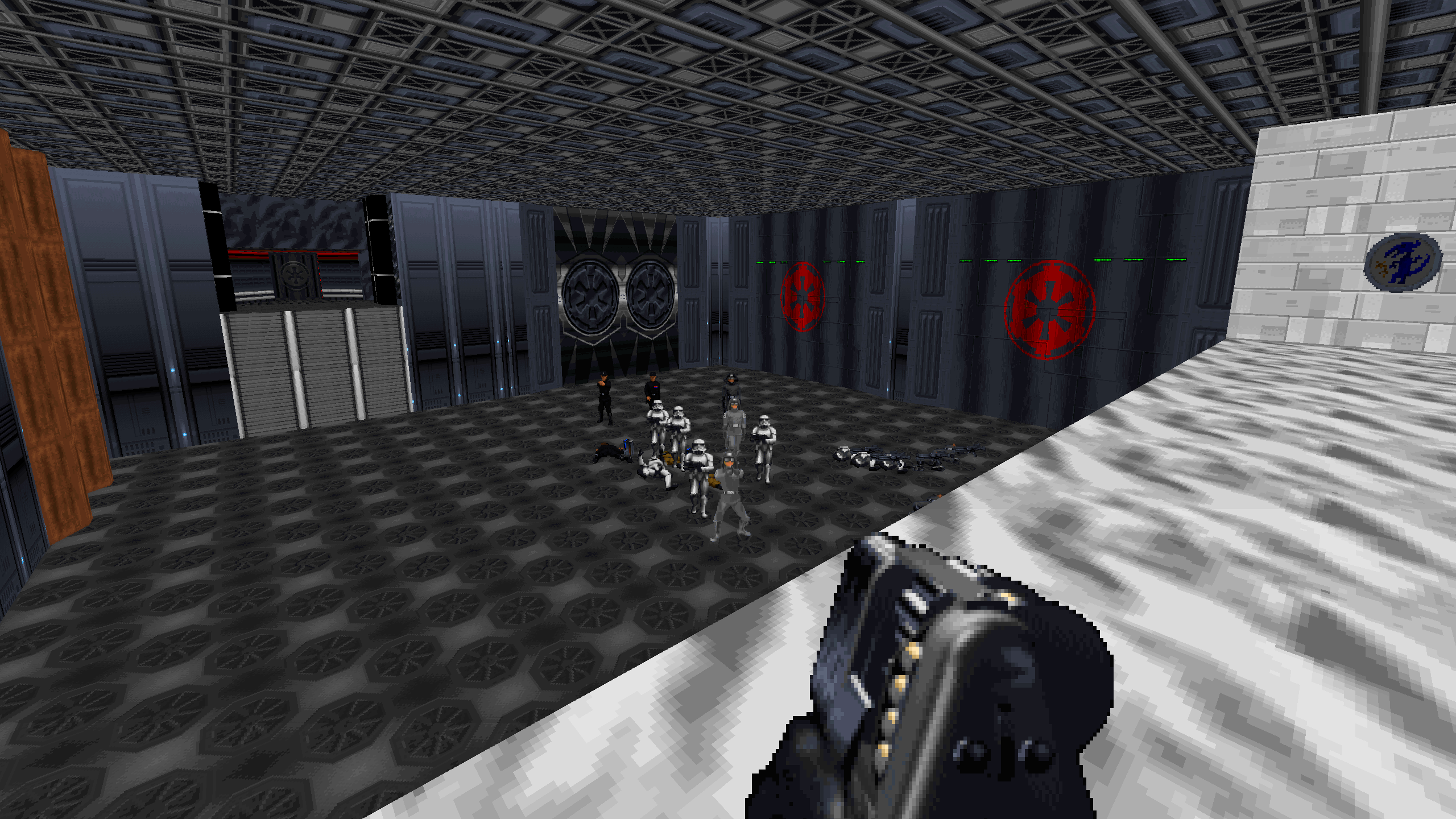
DF-21.net : Would you be fine if the community or JimboSensei continues your work on Cloudspear2 ?
Kevin : I would have no objection to any of those things. I would also have no objection if someone wanted to clarify that code puzzle in Ironfort or rewrite Cloudspear 1 into a standalone. What was supposed to be Cloudspear 2 doesn't necessarily have to end up as Cloudspear 2. It would be nice if someone were to finish that level, though, even if it was relatively short and had nothing to do with Cloudspear.
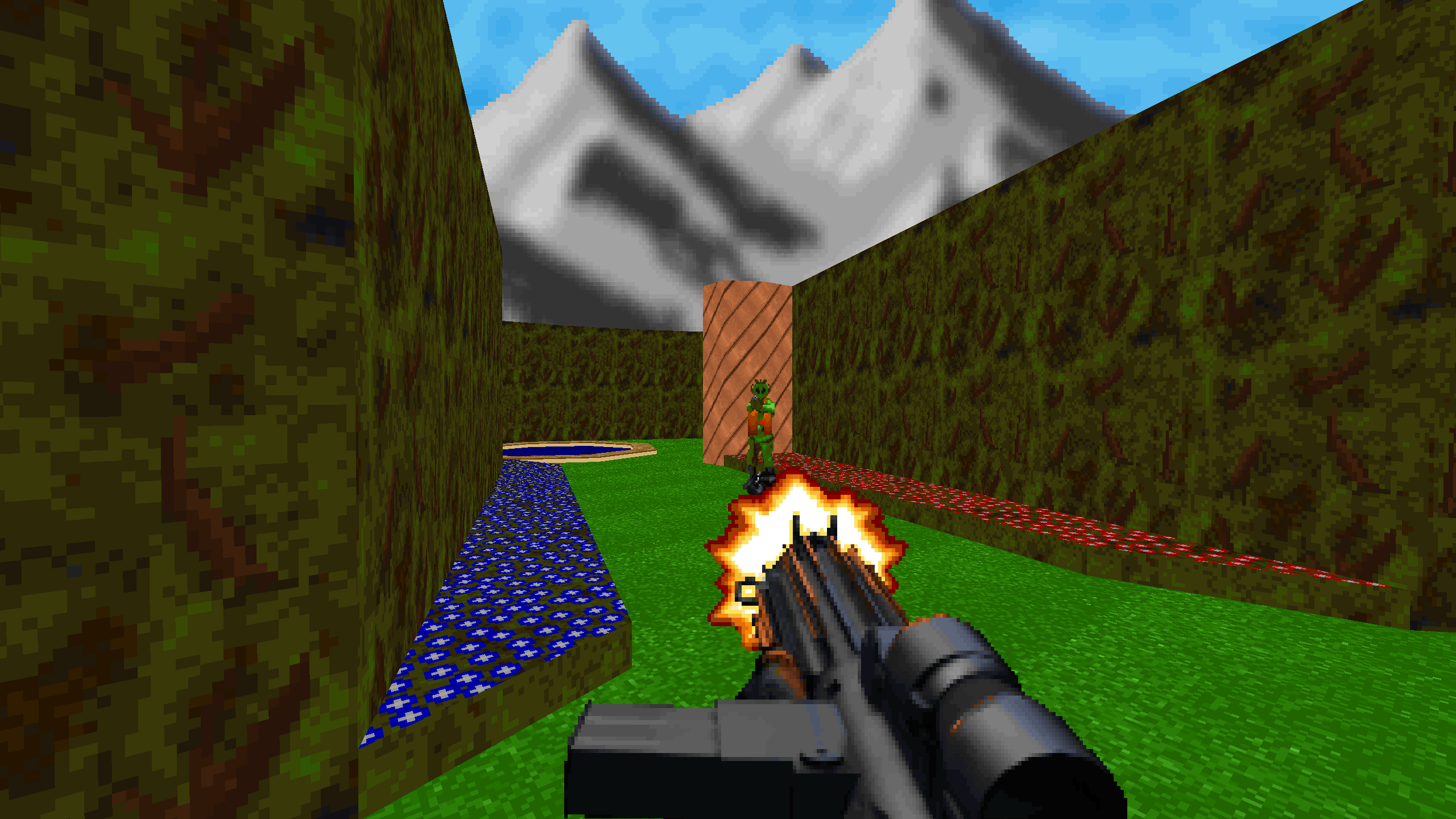
DF-21.net : What do you think of JimboSensei's Cloudspear 2 plotpoints ?
Kevin : That looks like it would work just fine. I particularly like the idea of the wealthy part of town.
Anyone taking up the series is welcome to do whatever they want with it. The only thing that I would ask is that they consider turning the mission over to a new main character. To me, Andresk (who sometimes expressed my own thoughts) was intended to be a grumbling-yet-secretly-content support character who may (or may not) have been forced into the role of reluctant hero. I even toyed with the idea of him performing some essential supporting task while *The True Hero* took out the pirate boss. My plans for Cloudspear where almost aggressively unambitious, but there's no reason for anyone else to be hemmed in by my choices if they don't want to be. A new main character would give the new author(s) more creative freedom if they wanted to go in a different direction. But that's their decision to make. I'm retired.
If anyone is interested, here's a few things I can remember about my own ideas for the series:
Part 2 was planned to be in a domed, probably underwater place, but that's about as close as I came to settling on anything. For part 3, Cloudspear was definitely going to turn out to be some sort of abandoned mountaintop cult monastery - with lots of creepy stained glass windows as foreshadowed in the briefing background for Cloudspear 1.
For the pirate boss, one idea I considered was having him hurl threats at the player while a series of large doors slowly opened to reveal....... a simple, single-shot, imperial officer-equivalent enemy who dropped a key. I probably would have just re-colored the clothes of one of those green Greedo guys. It would have been EPIC, as the kids say.
I was almost reluctant to have some kind of twist for an ending, but only because I thought everyone would be expecting some kind of twist. But one idea that appealed to me was to have Othket Corporation logos hanging up in strange places in the monastery. The pirate boss would turn out to be the archive robot from part 1, remotely issuing orders from his basement office to his lieutenants at Cloudspear. He would have simply been doing his job: making money for the defunct corporation the only possible way he could through piracy. Maybe he might not have even known his "employees" were criminals? It might have been fun if Andresk ended up offering him a position as a government bureaucrat.
But, again, anyone who wants to finish the Cloudspear series can and should do whatever they want with it. I wish them luck if they do and hope they have a good time doing it.
Addendum
Kevin was gracious enough to provide never-before seen ORIGINAL sketches of Kevin's missions. Enjoy everyone!
